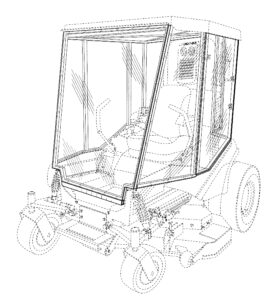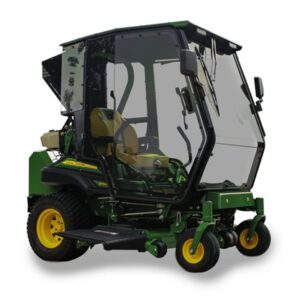B&D sued Curtis, accusing the company of infringing three patents – one utility and two design patents – relating to air conditioning systems for open-cabin vehicles (such as tractors, lawn mowers and the like). Curtis countersued B&D and Fairdale Farm Tractor & Equipment Co. for unfair competition under both the Lanham Act and Mass G.L. c. 93A as well as for civil conspiracy, in relation to Fairdale and/or B&D relabeling Curtis products with a B&D-owned trademark, resulting in false designation of origin.
Curtis then moved for judgment on the pleadings on the two design patent claims. Judge Guzman granted this motion, finding that the accused products were sufficiently distinct from the claimed designs that B&D would be unable to prove the designs to be “substantially similar” to the ordinary observer. She noted that general conceptual similarity between a claimed design and an accused product is insufficient to show infringement, as a design patent does not cover the concept, but instead claims only the specific design. Further, similarity between functional elements must be excluded in the “substantial similarity” comparison.
Judge Guzman found that no comparison to prior art was required because the designs and the accused products were plainly dissimilar. She noted that the existence of four walls and a roof that enclose the cab is functional, as it serves to create an interior that is closed off from the outside, a necessity for the air conditioning system contained therein. Looking to the specifics of the walls, the designs are plainly dissimilar – the claimed design has straight walls while the accused product has angled lines and multiple surfaces per side.
| Fig. 1 of D863,372 Patent | Accused Product |
 |
 |
The second design patent covered the roof of the cab. B&D’s complaint alleged that the roofs of the three accused designs were all basically the same, but in opposing the motion for judgment on the pleadings B&D tried to assert that there were substantial differences that required discovery to reach a determination on substantial similarity to the claimed design. Judge Guzman refused to allow this change, noting that in determining judgment on the pleadings, the parties were bound by the contents of the pleadings themselves. She again determined that, disregarding the functional elements, the accused products were plainly dissimilar. Accordingly, she dismissed the design patent infringement claims.
By submitting this form, you are consenting to receive marketing emails from: Lando & Anastasi, LLP. You can revoke your consent to receive emails at any time by using the SafeUnsubscribe® link, found at the bottom of every email. Emails are serviced by Constant Contact
SHARE THIS POST

